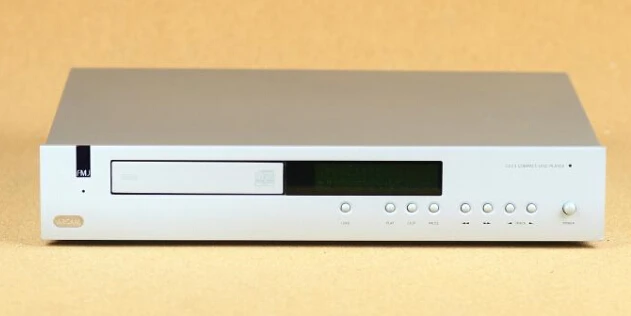Compact disc had a particularly intriguing period in the early 1990s. Digital audio, like ‘that difficult second album,’ had a dilemma in terms of how to progress. Philips and Sony had developed slick second-generation machines, but these were simply evolutions of their first-generation goods, and it was time to start over and create fresh forward-thinking devices for the 1990s. The TEAC VRDS-10 was one of the most unique designs to emerge during this time period, as it set a whole new standard for what an audiophile silver disc spinner should look like and how it should be manufactured.
The original late-eighties P-1 transport featured TEAC’s Vibration-Free Rigid Disc Clamping System, a stunning product that was extremely well crafted inside and out. At the same time as Philips machines were moving away from their over-engineered glory days and toward more cost-cutting mechanisms, TEAC developed a silver disc drive that was made just as well as the first, iconic Philips CDM0. The VRDS-10 used the second generation of the VRDS mech and was a big hit in the UK in the early 1990s, selling for roughly £1,000.
The corporation needed a top-of-the-line one-box CD player by 1992, and this was it. It was essentially an upgrade of the 10, focusing on better build quality while maintaining the basic architecture with a third-generation VRDS mech and an 8x oversampling 20-bit DAC. It had a luxury design that cost 250,000 yen in Japan, placing it up against the likes of Sony’s excellent CDP-X777ES. It cost £2,000 in the United Kingdom.
It had a lot of copper plating inside, as you’d expect from a product of this price at the time, as well as a lot of vibration-damping and special adjustable feet. The casework was made of beautifully finished solid aluminium that was 5mm thick on the sides to give it heft and a tank-like look. There were RCA phono and balanced XLR analogue outputs on the back, as well as XLR (AES/EBU), coaxial, TOSLINK optical, and coaxial digital outputs.
The VRDS-20 isn’t as great acoustically as it appears. That’s not to say it’s bad; it’s simply that competing designs from firms like Marantz performed better for the same price. With superb, deep bass, it produces a huge, powerful, confident sound. The midband is clear and crisp, and the treble is smooth and silky; all good, except the player has a killing instinct when it comes to rhythms; the similarly priced Linn Karik of the time was a considerably more enjoyable listen, even if it wasn’t quite as refined in a “hi-fi” sort of way. Overall, it’s still a nice machine that can be serviced thanks to its Sony KSS-151A laser (still available if you look in the right places, for a princely sum). Prices start about £500 on eBay, making it an excellent deal if you can find a good example.








